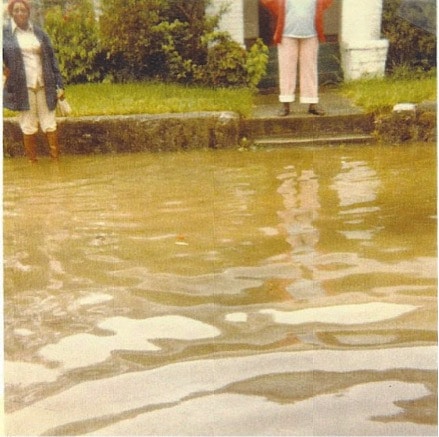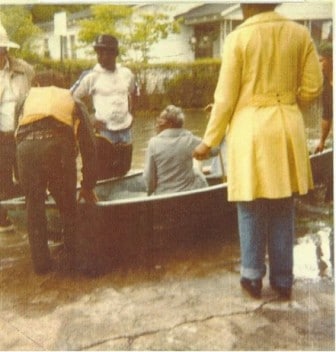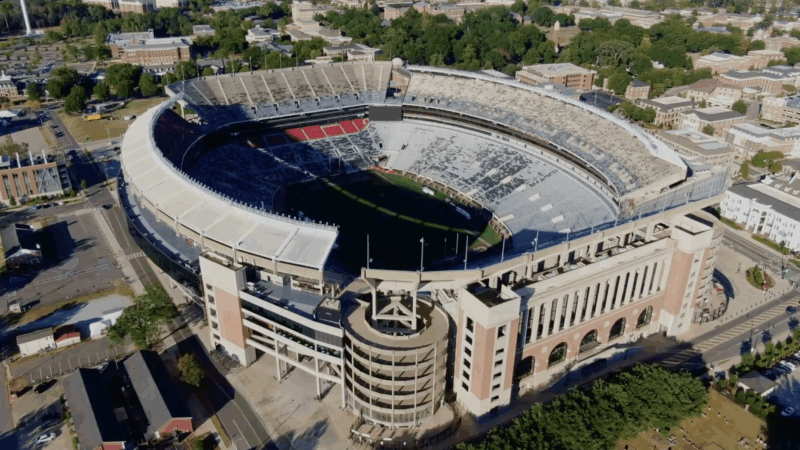Voices from Birmingham’s History: Flooding Along Village Creek in Ensley
Birmingham is in a valley, resting at the foothills of the Appalachians. The city’s creeks collect water running down from the mountains and filter it through the floodplains. Last week, WBHM reported on developers today taking a new interest in the 1925 Olmsted Plan for parks and green space in Birmingham. The Olmsted Plan preserved the city’s major tributaries, specifically those of Village and Valley Creek.
But the city didn’t follow the plan, and African-American industrial workers moved onto the flood plains. From 1988 to 2007, the City stepped in to complete a series of buyouts to remove homes from these areas.
As a child, Marilyn Roberts lived along Village creek in Ensley, a community that experienced years of flooding prior to citywide efforts to address the problem. She talked with Mary Scott Hodgin about her story and the impact of past flood events. Listen to what she has to say above, or read it below.

Village Creek Society
“There were times when the water would get in and it was so high it would cover half the room.”
“We moved to Ensley in 1960 from North Birmingham onto Eleventh Street. It was right on the creek bank, but we didn’t know about the flooding at the time when we moved. When we did find out about it, it was coming up the road — we were having to pack up everything, put furniture on chairs and get prepared to get out of the house. We could actually stand on the porch and look down the street and see when to leave the house before it would come all the way up the street. It was coming in fast.”
“Eventually we would have to leave our homes and go to dry land and then wait for the water to recede, and then go back in the house and we would have to clean up the house, clean up the muddy waters. There were times when the water would get in and it was so high it would cover half the room, and we had to go in and have someone gutter the sheetrock, redo the wiring, and redo the hardwood floors before we could move back in.”

Courtesy of Village Creek Society
“Eventually we would have to leave our homes and go to dry land and then wait for the water to recede and then go back in the house and we would have to clean up the house, clean up the muddy waters,” recalls Marilyn Roberts.
“One year, I think it was the last flood somewhere in 1983, when they had like eight feet of water, and my mom she was asleep and woke up and the water was up — it was so high they had to get the boats to go in and get her and she was standing on the banister until someone came and picked her up in a boat. It was scary. She didn’t want to go back up there after that.”
“The buyout came in the 1980s as well, right after the big flood. A lot of people wanted to move out because they didn’t want to go through that anymore and my mom was one of the ones that were bought out. They actually removed our house and placed it somewhere else. The land is still vacant there; they haven’t cultivated it into anything else but the city is working right now to put a park and trail and build it up for the families to come in and enjoy the park.”
Auburn tabs USF’s Alex Golesh as its next coach, replacing Hugh Freeze on the Plains
The 41-year-old Golesh, who was born in Russia and moved to the United State at age 7, is signing a six-year contract that averages more than $7 million annually to replace Hugh Freeze. Freeze was fired in early November after failing to fix Auburn’s offensive issues in three seasons on the Plains.
Alabama Power seeks to delay rate hike for new gas plant amid outcry
The state’s largest utility has proposed delaying the rate increase from its purchase of a $622 million natural gas plant until 2028.
Former U.S. Sen. Doug Jones announces run for Alabama governor
Jones announced his campaign Monday afternoon, hours after filing campaign paperwork with the Secretary of State's Office. His gubernatorial bid could set up a rematch with U.S. Sen. Tommy Tuberville, the Republican who defeated Jones in 2020 and is now running for governor.
Scorching Saturdays: The rising heat threat inside football stadiums
Excessive heat and more frequent medical incidents in Southern college football stadiums could be a warning sign for universities across the country.
The Gulf States Newsroom is hiring an Audio Editor
The Gulf States Newsroom is hiring an Audio Editor to join our award-winning team covering important regional stories across Mississippi, Alabama and Louisiana.
Judge orders new Alabama Senate map after ruling found racial gerrymandering
U.S. District Judge Anna Manasco, appointed by President Donald Trump during his first term, issued the ruling Monday putting a new court-selected map in place for the 2026 and 2030 elections.








